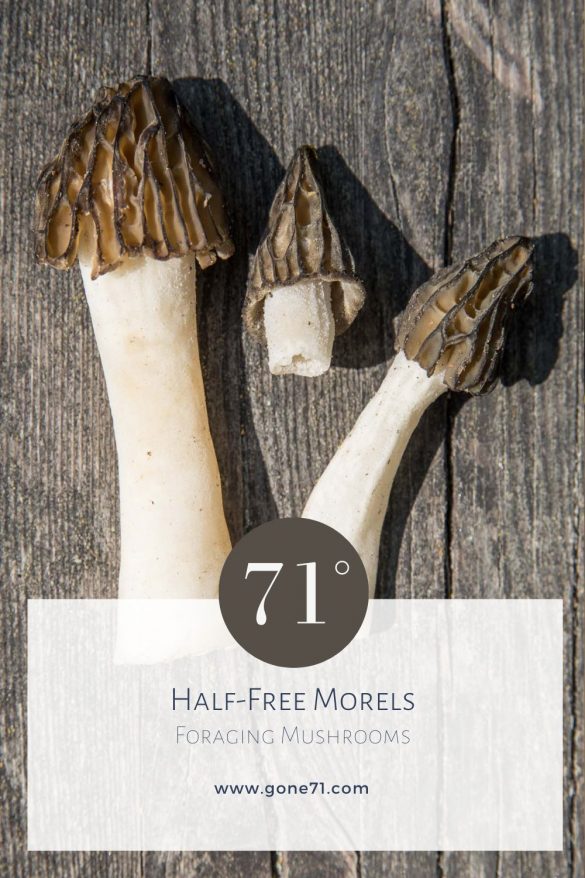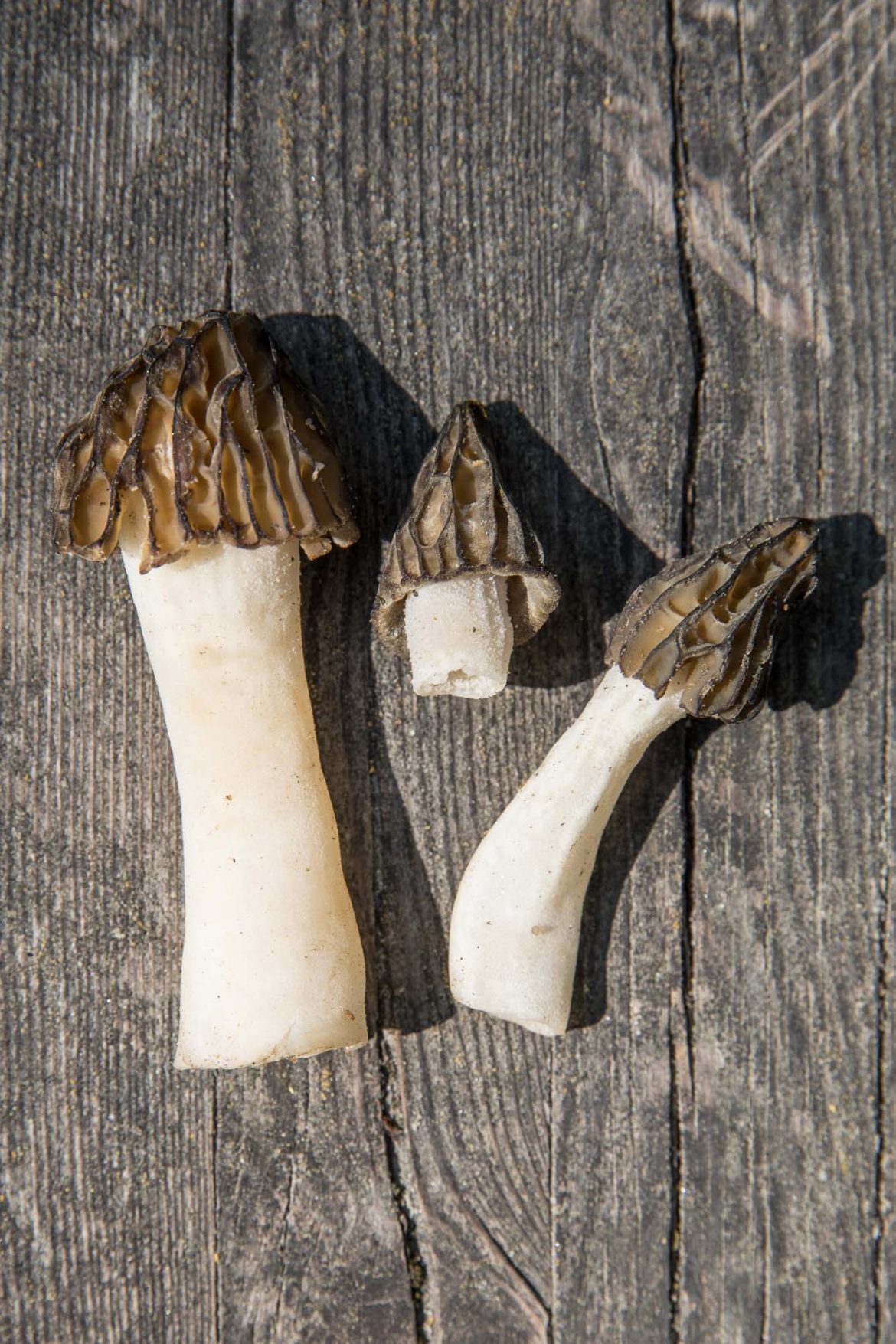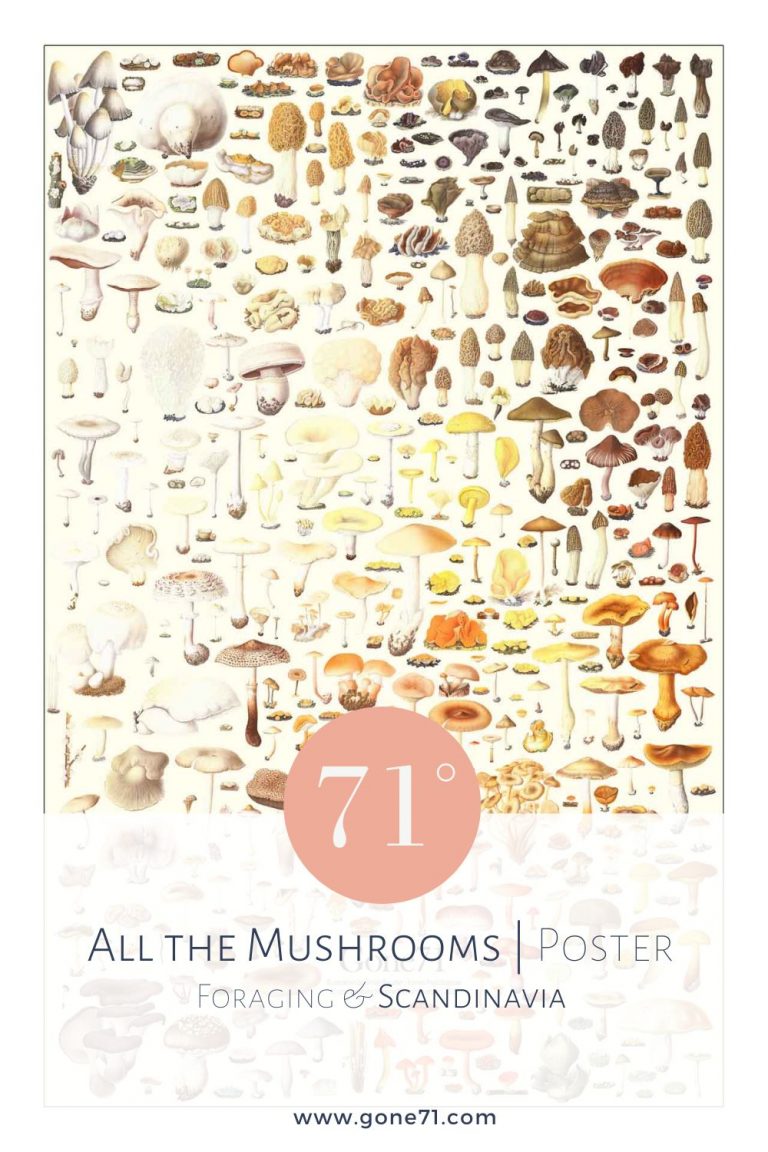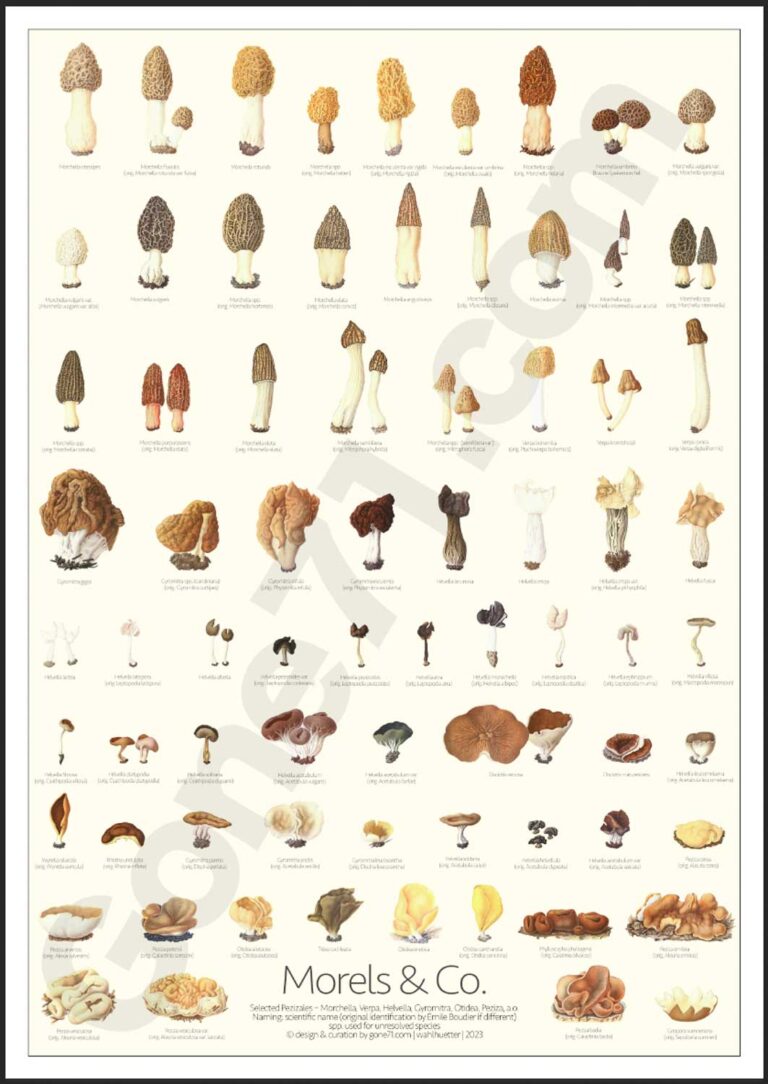swe.: Hättmurkla | nor.: – | fin.: –| dt.: Käppchenmorchel
Half-free morels are an edible species of mushroom closely related to the common morels. Opinions differ on these mushrooms and, especially in some older mushroom literature, these fungi are sometimes listed inedible. The fact is, however, that half-free morels can be used in the kitchen just like its more legendary relatives, the common morel. As with the common morels, the half-free morels are also toxic in their raw state and must therefore be cooked sufficiently (~10 minutes at min. 80° C). When cooking, the incompatible substances evaporate and the culinary product can be enjoyed without hesitation. Symptoms of poisoning are expressed in gastrointestinal upset.
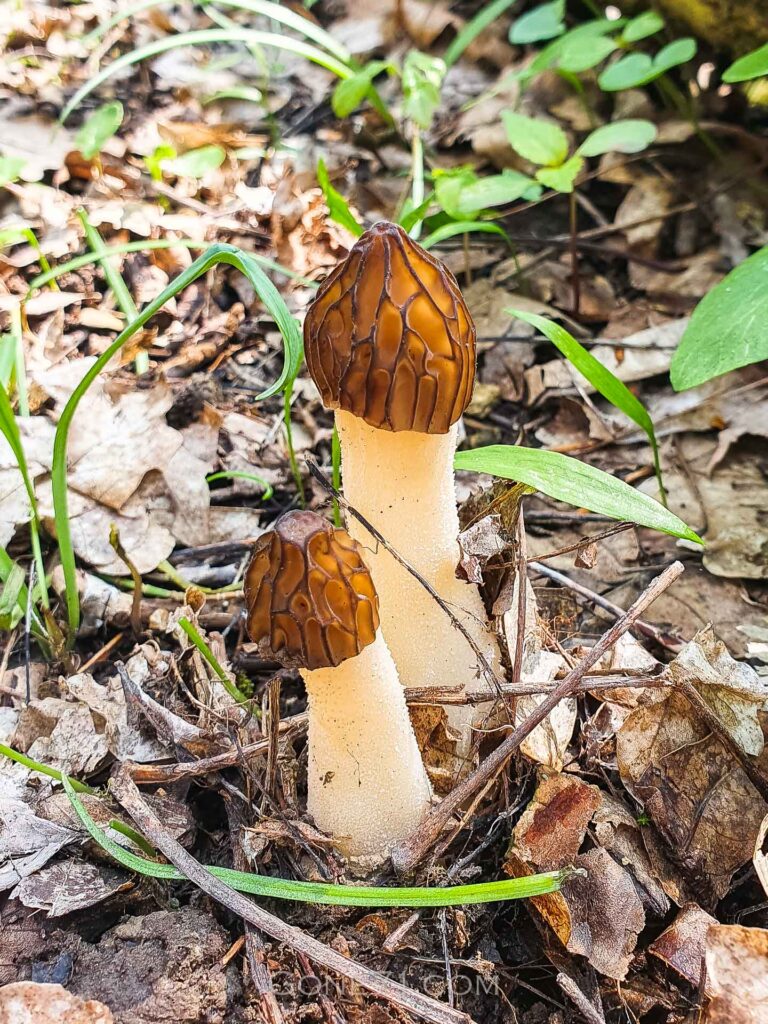
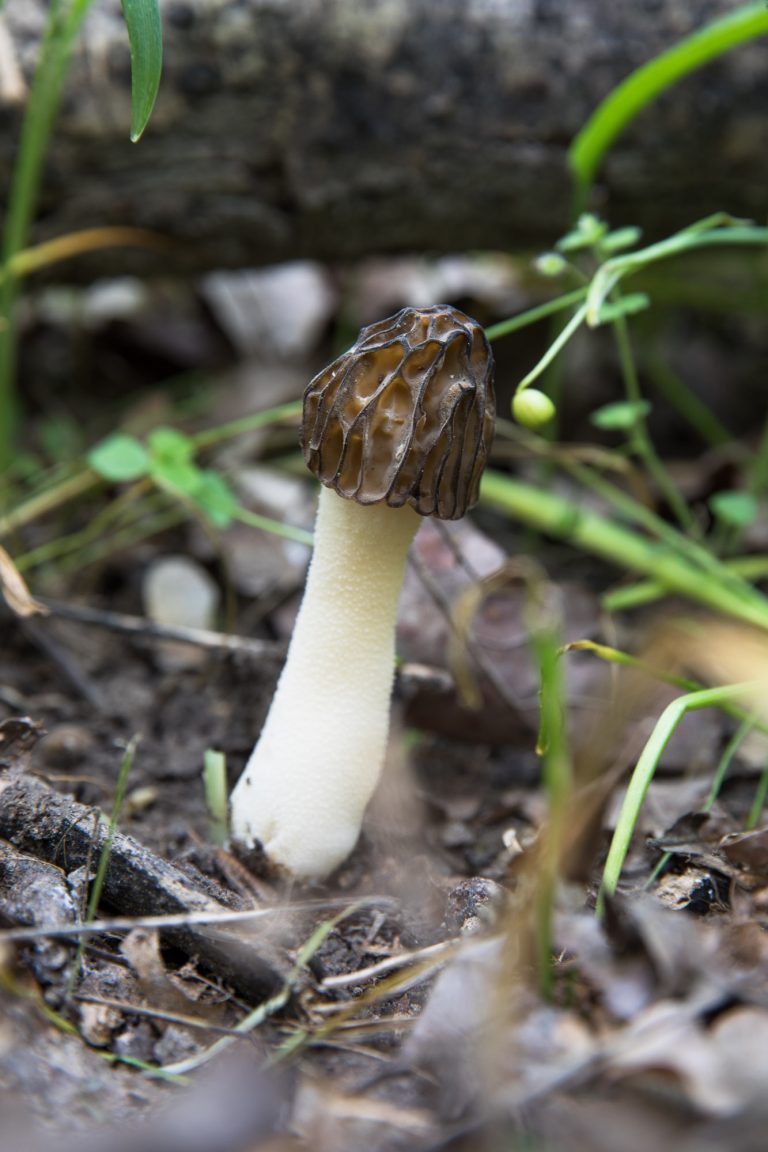
Identification of Half-free morels (Morchella semilibera)
The half-free morel has a pointed yellowish-brown cap that is very fragile. A good third of the cap has grown onto the light white to yellowish stalk. The entire fruiting body grows between 3 and 7 cm high. Half free morels are most commonly found in alluvial forests and mixed forests, especially together with populus trees. The main foraging time is in the spring, with the months of March to May being the most promising, depending on the area. They usually appear when it stops freezing and before the true morels show up.
This mushroom can easily be confused with Verpas, especially Verpa bohemica. A confusion in this regard is not dangerous, since both types are edible.
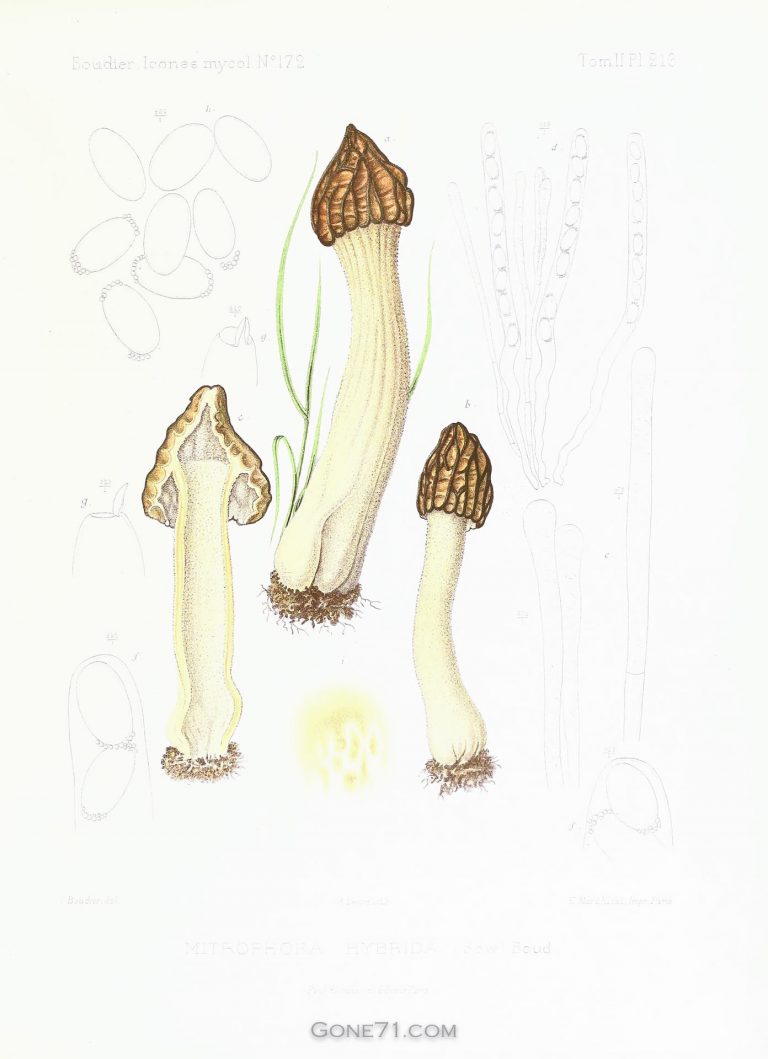
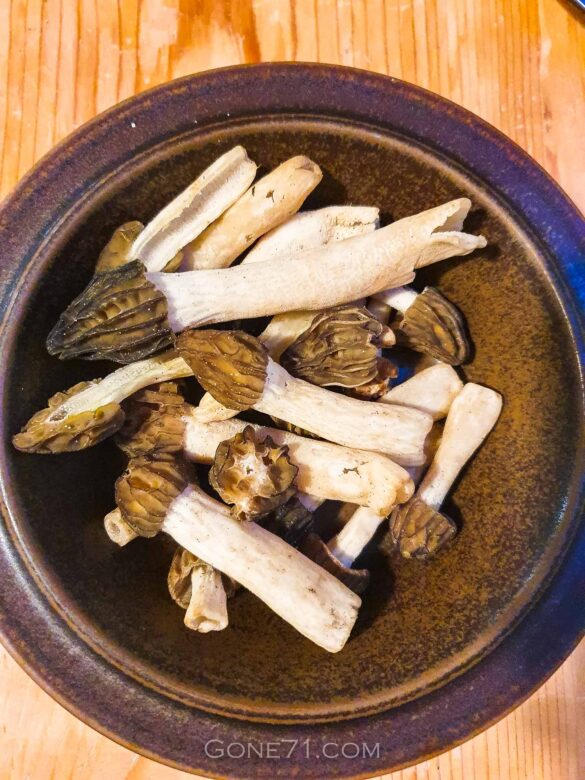
Half-free morel vs. Common morel (Morchella esculenta) vs. Early morel (Verpa bohemica)
- Common morels are much more stout and the fruiting body far more pronounced. Half free morels are usually very delicately built. In addition, the stem makes up a much larger part of the fruiting body than in true morels. Often the hat of the half free morels is really very small. So for a meal you have to find a certain amount for a dish to be worth it at all.
- One of the main criteria, however, is that the stem of the real morels merges directly into the cap. In the half free morels, the cap is much more clearly separated and about a third of the cap is attached to the stem – hence the name “half free”.
- The cap of the Early morel is only attached at the top and the caps can also be easily removed. The stem is chambered and hollow and has a cottony interior. The cap is much more rounded and not as pointed as with half free morels.

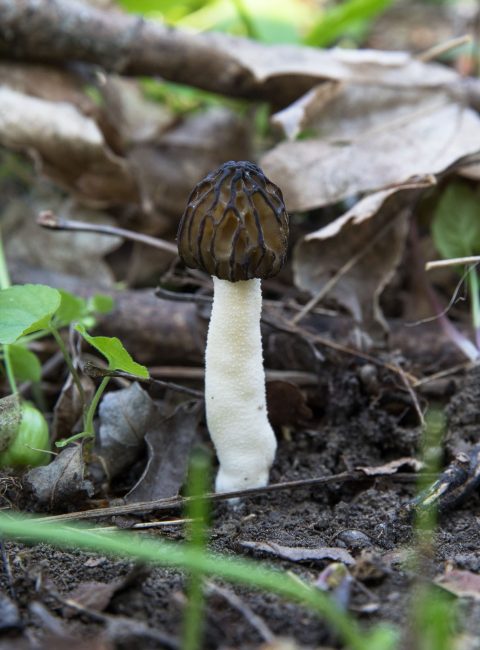
Confusion of Morchella semilibera with other species
Despite from true morels and verpas, there is a possibility of confusion, especially with the highly poisonous False Morel (Gyromitra esculenta) and some other representatives from the Gyromitra family. Due to the high gyrometrine content in many those poisonous doppelganger, such a mix-up can be deadly. Even attempts to taste it in its raw state are considered dangerous. While much of this poison is lost during the cooking process, remaining amounts can still cause severe poisoning. Anyone who would like to collect morels should be absolutely sure when distinguishing between morels and poisonous species. Don’t eat them if you have any doubts.
- Half-free morel (Morchella semilibera): The stem is hollow and partially fused with the cap, while the cap is usually pointed.
- Early morel (Verpa bohemica): The stem is chambered, cottony hollow, and only slightly attached to the cap at the top, while the cap is not pointed but rather rounded
- Bell-morel (Verpa conica): The stem is chambered and hollow, only slightly attached to the cap at the top, while the cap is not pointed but rather rounded, with minimal raised ridges. More smooth surface.
There is a dedicated facebook group that you can join if you are not sure how to identify different species, of Morchella, Verpa, Gyromitra or Helvella.

Cooking Half-free morels (Morchella semilibera)
In terms of taste, half free morels are comparable to real morels. Recipes in which the mushrooms are sautéed in butter are particularly suitable. But sauces, risotto dishes, soups or salts are also very popular with many. Find a preparation that suits your taste and off you go. Like true morels, these mushrooms are ideal for drying and storing.
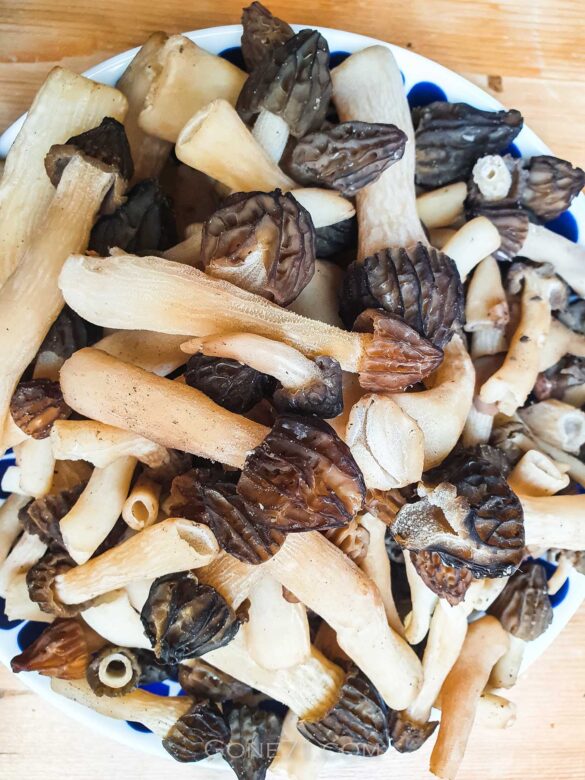
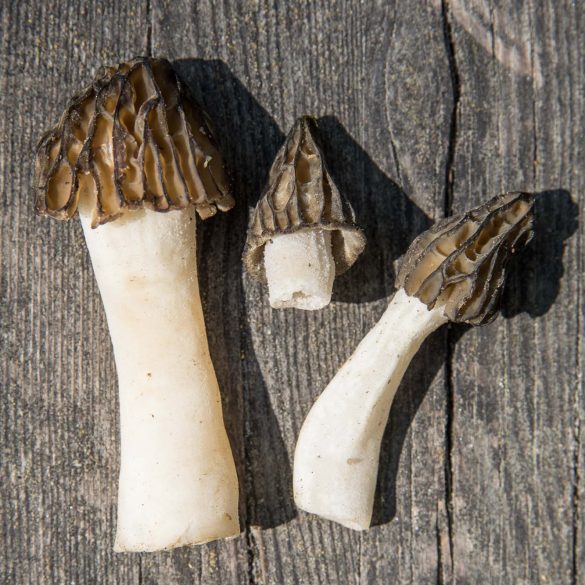
Half-free morel & asparagus risotto
Ingredients
- 200 g fresh half-free morels (alternatively Verpas or morels)
- 500 g green asparagus
- 2 tbsp olive oil
- 2 minced shallots
- 200 g risotto rice
- vegetable broth
- 1 small glass
- 1 glass of dry white wine
- approx. 2 handfuls of fresh spring herbs (e.g. goutweed, nettle)
- salt, pepper,
- parmesan
Instructions
- Cut the fresh mushrooms into large pieces. The caps can also be used as a whole if you have a lot of small specimen.
- The lower part of the stem is usually removed (some eat it). If you don't have fresh mushrooms available, you can also use dried specimens.
- Peel the lower part of the asparagus.
- Cut the asparagus into thin slices. The heads stay whole.
- Sauté briefly in olive oil and set aside.
- Sauté onion, mushrooms and rice in oil.
- Pour in the wine and stir constantly.
- Slowly stir in the vegetable broth so that the risotto has enough liquid to swell.
- The asparagus is only added to the risotto shortly before the end and is then only cooked for a few minutes.
- Finally stir in the herbs and parmesan.
- Treat yourself and others with a fantastic meal.
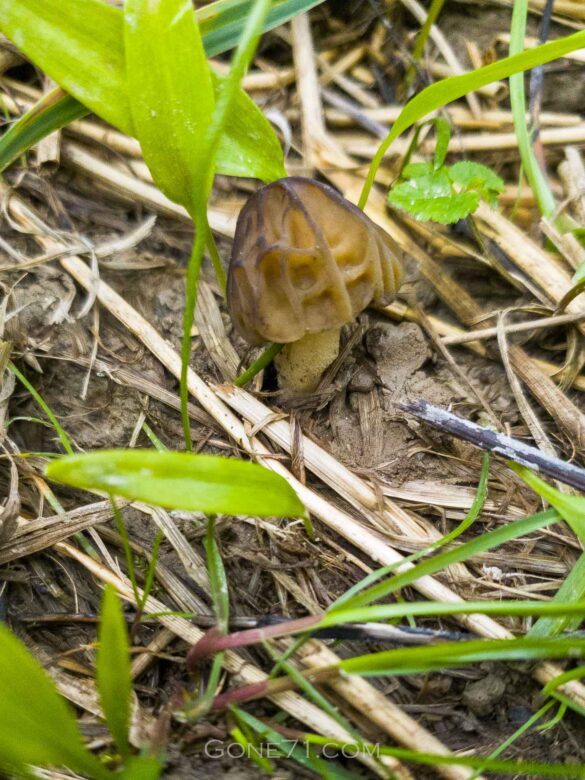
Find some inspiration in other mushroom recipes
We have compiled this overview with the best of knowledge and belief, but do not claim to be complete and reserve the right to make errors.
Learn more about poisonous mushrooms and mushroom poisons here
↓↓↓
